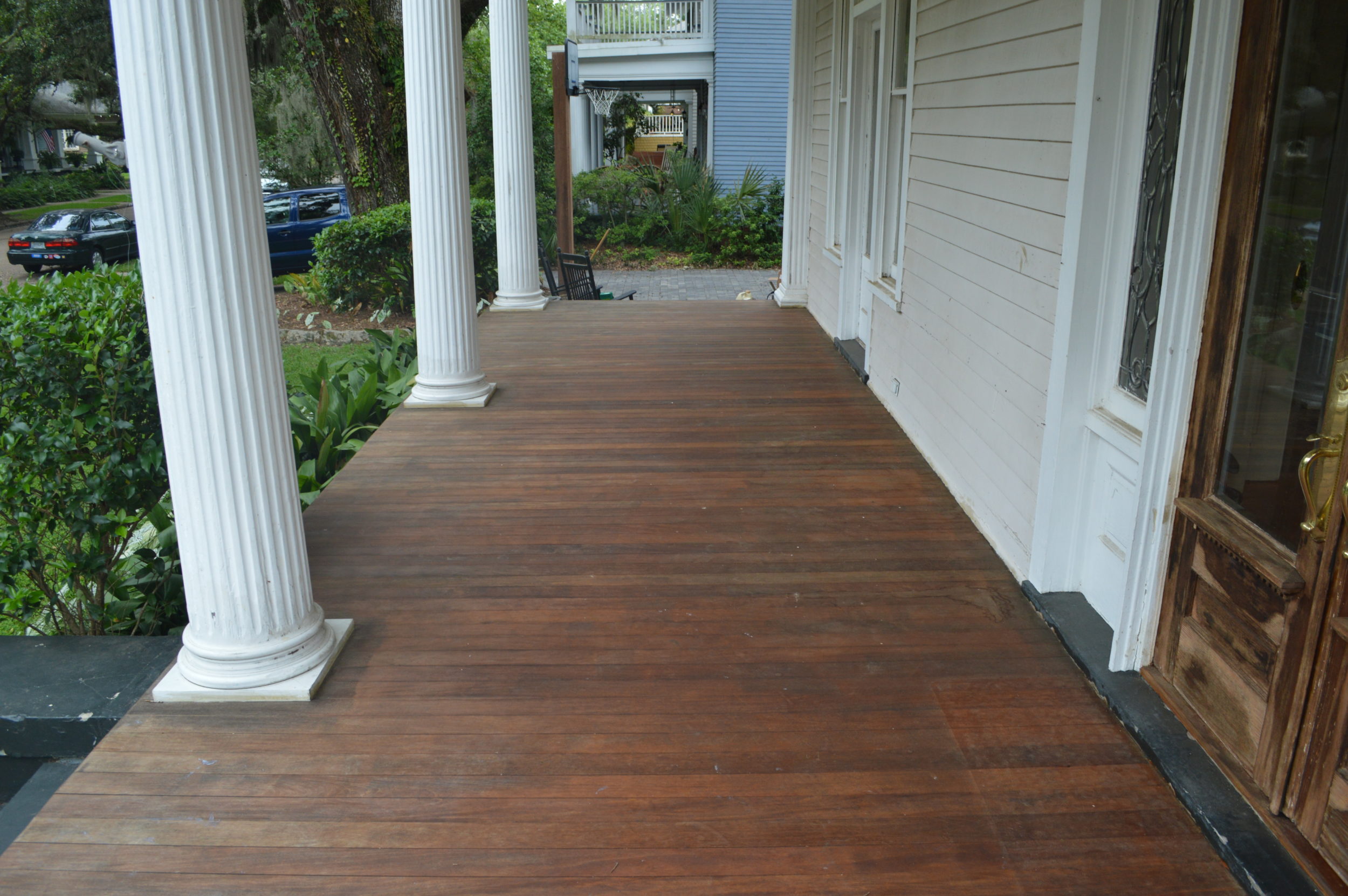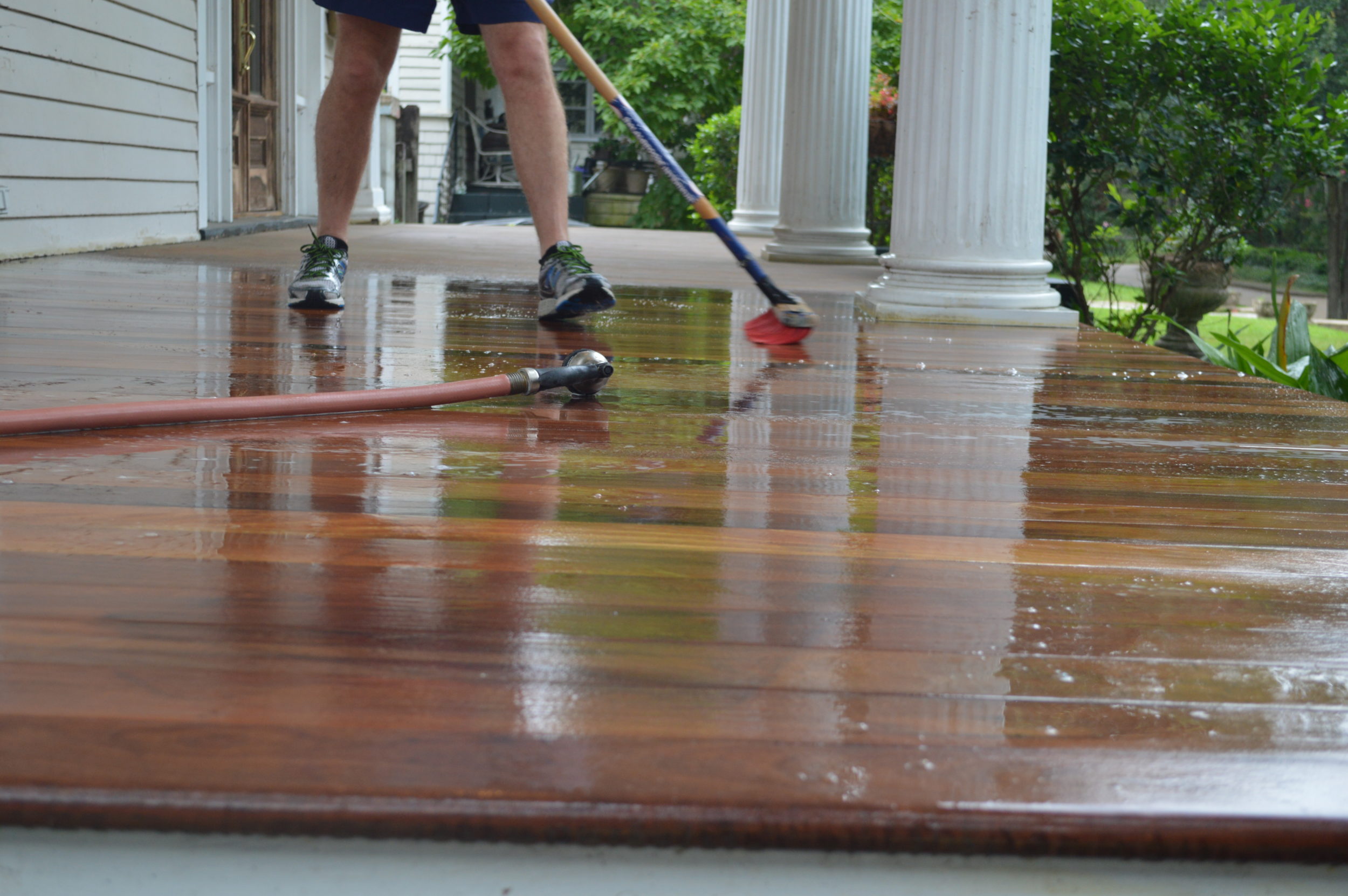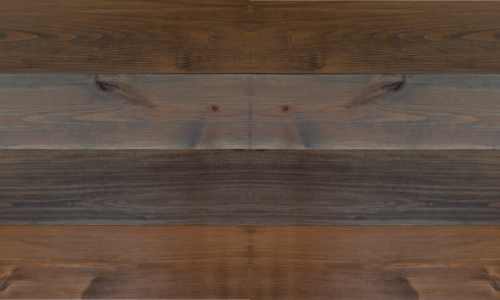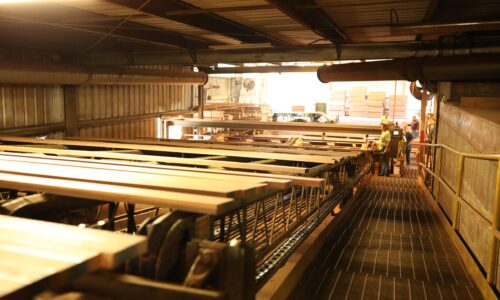During the winter months, it can be easy to neglect deck maintenance. However, the build-up of snow and ice can cause damage if you don’t prepare for winter. We’ve made a helpful list to get your deck ready to brave the cold and look better than ever when spring comes around.
1. Clear the furniture
When preparing for harsh winter weather, the best place to start is removing your outdoor furniture. When you leave it on your deck, it will cause the snow to build up and trap condensation underneath. It’s important to move any patio furniture off of your hardwood deck to keep this moisture from turning into mold and mildew. In addition, if the furniture is metal, it may oxidize and leave stains on your boards.
2. Clean off leaves and debris
Before snow falls, you should also clear leaves and debris from your deck. The leaves have tannins in them which can bleed into the wood and discolor the boards. Make sure to also clear any debris that is stuck in between the boards. Doing this will unblock the airflow and allow melting snow to properly drain through the deck boards.
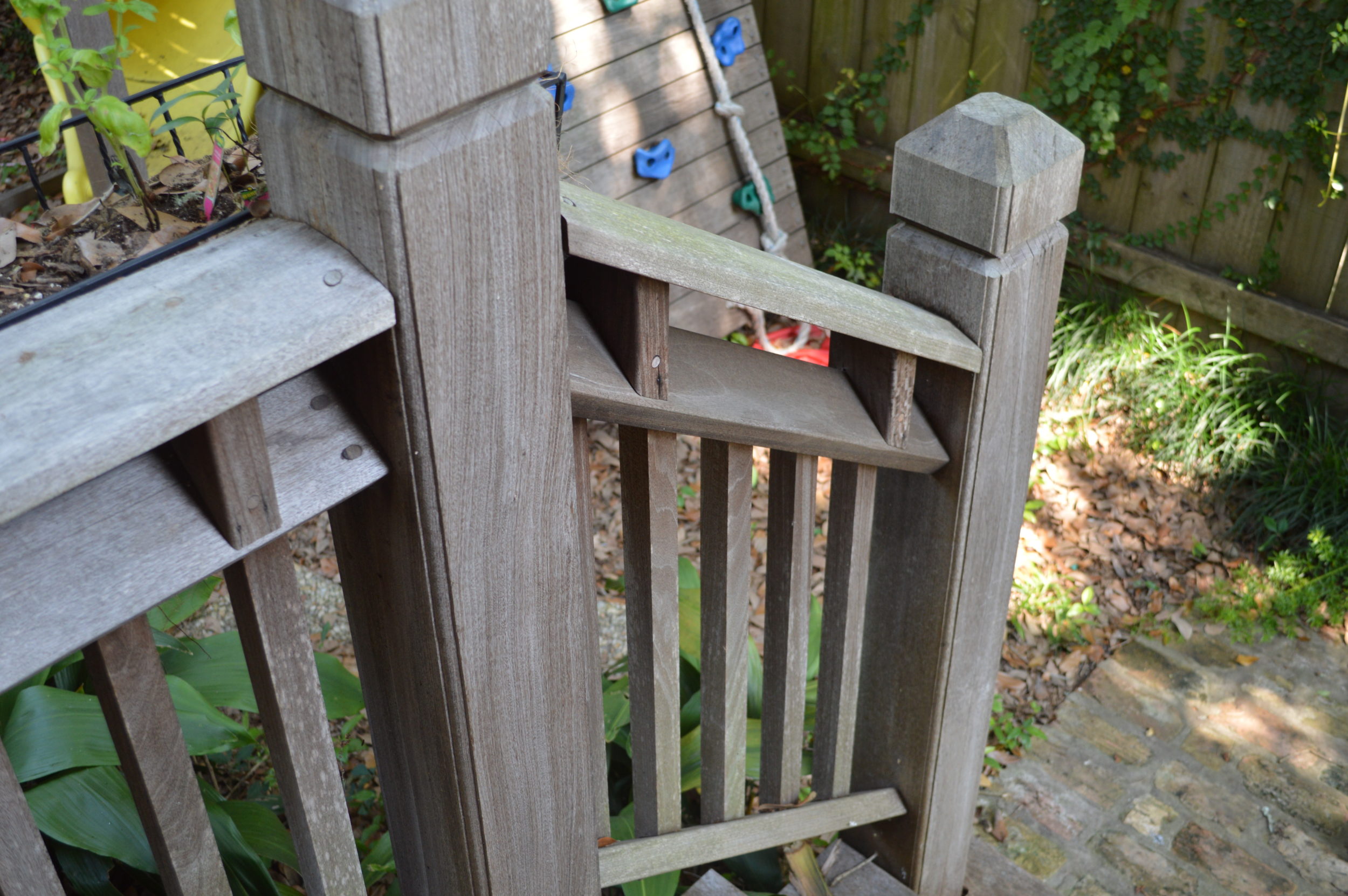
3. Fix unstable boards and railing
The winter elements can cause further damage to your hardwood deck, so it’s best to fix the trouble spots on the front end (e.g. damaged boards, loose railing). We suggest setting aside time to inspect your deck for any unstable areas and then make plans to repair the boards before the first snow falls.
4. Take care of spots with mildew and mold
As you’re fixing the unstable boards and railing, keep an eye out for spots with mold and mildew. Since snow and ice bring moisture, these spots will only get worse if not taken care of beforehand. We suggest using a deck cleaner/brightener that is made for your specific type of wood.
5. Remove snow with care
Once the snow falls, it’s important to clear it away without causing any damage to your hardwood boards. If there is only a light amount of snow on your deck, use a broom to sweep it off. For heavier amounts of snow, use a plastic shovel instead of a metal one and shovel the length of the boards as opposed to against them. This will prevent you from making scratches or dents on the wood.
6. Avoid using salt
While salt may be great for keeping snow off the roads and your driveway, it can actually be damaging to wood materials. It’s best not to apply any salt to your deck as it can corrode your wood and affect the boards’ natural expansion and contraction.
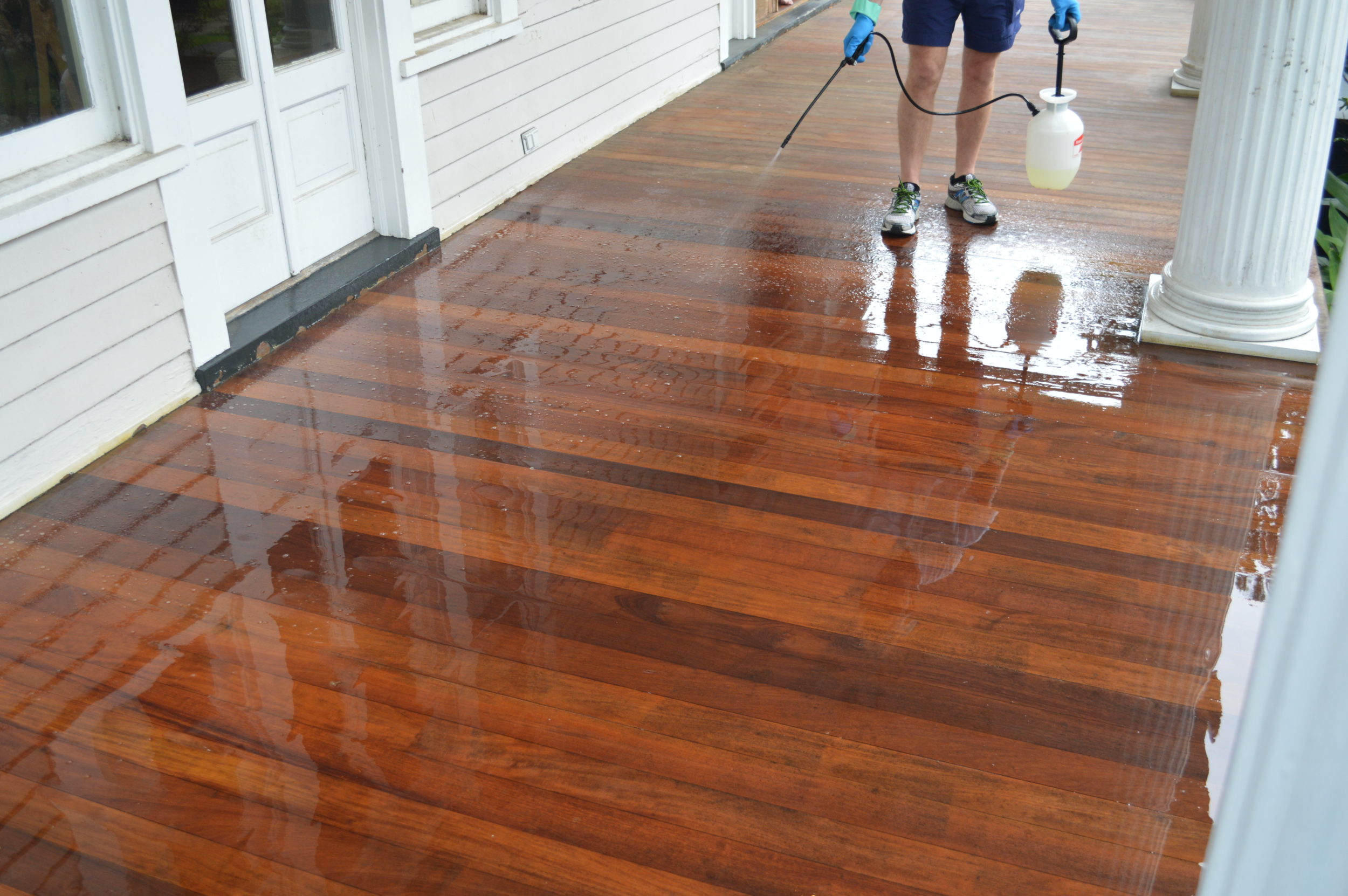
7. Apply deck oil (in the warmer months)
A UV inhibiting hardwood oil is a great way to protect your deck in general. However, we suggest that you apply it during the warmer months of the year. When applying, always back wipe the excess oil after 15 minutes. Applying oil to your deck before winter is a great way to help it maintain its natural beauty despite the snow and ice that come in the colder months.


